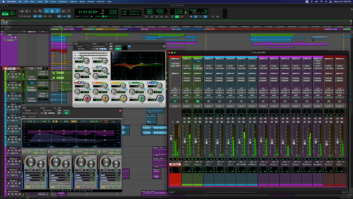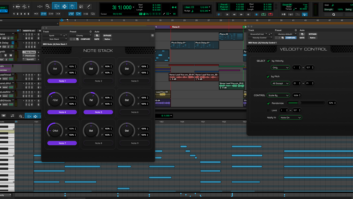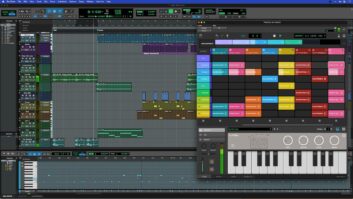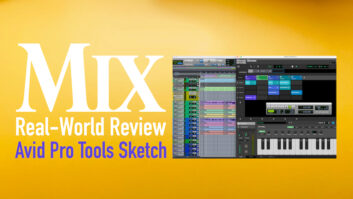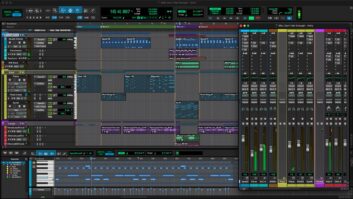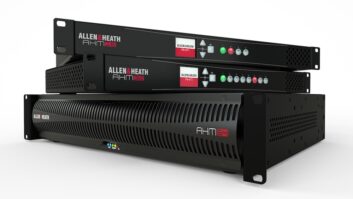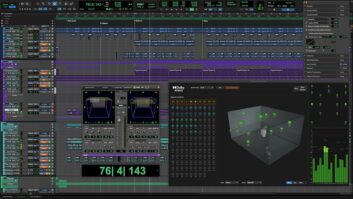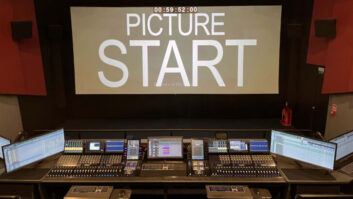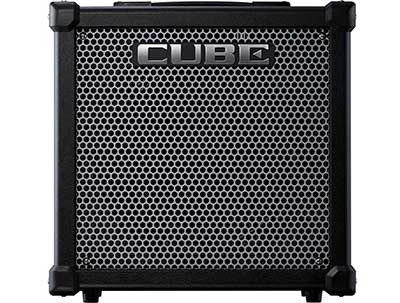
I entered the industry in 1997, fresh out of college and following three internships: a record label (Metal Blade in Simi Valley), then NRG in North Hollywood and finally, Masterfonics in Nashville. After aligning analog multitracks in school to live a Pro Tools existence upon graduation, I hit the scene at a time when the future was largely digital and on a screen. In Nashville we used Studer D827 48-track and Otari DTR-900 32-track digital tape recorders and exclusively SSL analog mixers—4000 E/Gs to one of the first J9000s in town, but fully, only for a time; the youngest producers were in the hallways, editing in Pro Tools via then-new Mackie HR824 studio monitors. It was a fun and innovative time.
Even so, today is the most exciting time I’ve witnessed in pro audio. Our main commercial studio haunts aren’t where they used to be, and the tools needed even five years ago have changed considerably; innovation gives us so much functionality that we used to pay for now as a courtesy. Which means we can buy more things.
In using $500 as a top figure to purchase Essential Tools, Hardware Version, I’m suggesting a relatively small group of products below. In no way am I excluding gear by suggesting similar products. Buy the best you can afford within budget, and if you don’t know all the best brands, you could do worse by following these suggestions, gleaned by countless conversations with end users, commissioning reviews for years with pro end users and friends, and/or personal experiences.
Under-$500 pro audio products don’t have to be beneath burgeoning pros—that is, unless you buy toys. Luckily, the MI/Pro Audio world offers enough solutions below this price point that skilled recordists can make it all happen with comparably low-cost gear and a nearly free DAW.
All prices quoted are street prices, or what you’d expect to pay before taxes and/or shipping.
MI TOOLS
Roland Cube 80 GX guitar/instrument amp, $399. It’s always good to have a flexible, clean-capable instrument amplifier on hand, and I’ve been consistently impressed with Roland’s Cube Series. Some of the best guitar tones I’ve heard live also shocked me when I learned they were coming from an affordable Roland Cube. Here I’ve suggested the powerful Cube 80 GX, an amp powerful enough, yet small and affordable enough, to always have as a backup or go-to studio-tracking amp.

Line 6 Firehawk FX processor/USB I/O, $449. Line 6 continues to provide musicians with superior, user-friendly amp simulation. For those recording lots of rock bands, a USB-ready processor with comprehensive tones available is ideal to have on hand. In my experience, you just can’t go wrong with Line 6 for affordable, surprisingly great guitar tones.

Ludwig Questlove 4-piece shell pack drum kit (drums only), $399. Why am I suggesting a drum kit? Fact is, we often find ourselves in recording situations involving troublesome drum kits. Perhaps a troublesome kit’s wood and build quality is fine, but it resonates with rattle-prone or squeaky parts, or perhaps drummers arrive with bad, dead drum heads (and no extra cash for replacements), etc. Audition this neat little 4-piece kit on site at a retailer dealer, and even insist on a display if it’s tuned, sounds and looks good. You’ll appreciate always having a surprisingly versatile, punchy drum kit that’s easy to play and position.
ESSENTIAL MICROPHONES
Assuming those audio types with $500 burning a hole in their pockets already own a handful of cardioid dynamic handhelds—like the ubiquitous Shure SM57 at $99—below are some great bargains I’ve found in the realm of studio-grade transducers.

Sennheiser MK 4 cardioid large diaphragm condenser (LDC) microphone, $299. This is simply a great-sounding microphone, versatile and arguably uncolored. Most sources in front of this mic are translated transparently. Close-miked vocals and instruments—even speaker cabinets and drums—are large and rich via the MK 4’s notably open proximity effect. The drawback? It might be slightly flavorless, but never too influential, either. That said, it’s the perfect gig bag LDC, as generally no one ever minds using a Sennheiser.

Audio-Technica AT2020USB+ condenser microphone, $149. A-T’s standard AT2020 being a solid yet affordable cardioid large diaphragm condenser, I’d recommend having its USB version as a go-to gig bag solution. It sounds great and allows direct-to-CPU overdubs and “idea scratch pad” usage nearly anywhere.

Avantone CV-12 multipattern tube condenser (AKG C12 clone), $499. In my experience, the Avantone brand has offered a solid stream of very good mics. These are ideal for drum room mics, so buy one and plan ahead for two.

beyerdynamic MCE 86 II electret condenser shotgun microphone, $379. Electret shotgun microphones—such as beyerdynamic’s MCE 86 II—are small-diaphragm condensers, possessing key design features making them the only choice for some recording and live tasks. The MCE 86 II is an affordable and truly superb-sounding hypercardioid shotgun, one I would recommend to anyone. It sounds fabulous and full-range, boasting a rich 50 Hz-18 kHz frequency response. It’s lightweight for its size (0.2 pounds), and ruggedly built with a work-ready, no-scratch finish.

sE Voodoo VR2 active ribbon microphone, $499. More than a decade ago, I became very well informed on the manufacturing processes of sE Microphones, a Chinese manufacturer of unique pro-grade options. The Voodoo VR2, not new, was introduced in a flurry of ribbon releases just a few years ago. It still stands as a versatile, useful ribbon with the benefit of active electronics, perhaps $1k less than comparable products. Again, a pair would be golden, so plan ahead to eventually own two.

Shure KSM137 cardioid small diaphragm condenser microphone, $299. Shure’s small condensers have always been affordable favorites of mine, handling detailed and delicate sounds just as well as SDCs costing hundreds of dollars more. The KSM137 is a solid investment, even after you’ve bought pricier SDC options in the future. At $299, the KSM137 pushes our budget for a pair but may be worth buying together anyway.
PLAYBACK TOOLS

Mackie FreePlay Personal P.A., $399. The FreePlay Personal PA is the result of Mackie’s latest and greatest brainstorm: a super portable “swiss army knife” sound reinforcement problem solver, quite useful in many applications both personal and professional. The black polymer-encased 9.5 x 17.8 x 9.1-inch FreePlay chassis best resembles a new century “boom box.” It seems to be built well and is primarily designed for portable, on-the-fly use, weighing in at 11 pounds. It’s a stereo playback system—left and right high-frequency drivers with a shared, green-tinted 8-inch LF woofer. A built-in 4-channel digital mixer plus effects, two mic/line preamps, an 1/8-inch input and 1/4-inch monitor output comprise the FreePlay’s simple I/O scheme.

Elite Acoustics Designs Sunburst Gear MM Series M3R8, $230. Elite Acoustics Designs’ Sunburst Gear M3R8 could be the most useful multipurpose monitoring tool I’ve ever used. Is it a studio monitor, instrument monitor, sound reinforcement speaker, portable DJ/KJ rig, remote-location battery-powered portable P.A., or a 3-channel mixer with limited EQ? Actually, it’s all of those and more. The magnetically shielded, front-ported M3R8 features a 5.25-inch woofer and 1-inch tweeter; three input channels featuring XLR and TRS inputs plus eighth-inch auxiliary jack with volume knob; three-band master EQ; long-lasting 15-plus hour rechargeable battery; AC/DC operation; separate USB input and charge ports; and 35 mm bottom pole mount with a very sturdy overall build quality and road-ready design.

JBL 3 Series LSR308 studio monitor, $249. JBL’s affordable 3 Series of active two-way studio monitors is one of the best-sounding, truly affordable studio monitors I’ve found. At $249 each, the largest 3 Series model—the LSR308 featuring an 8-inch woofer, 1-inch tweeter with JBL’s proprietary Image Control Waveguide and dual-amped (56 W each) power per driver—provides accurate, non-fatiguing playback. The secret is in its design, benefitting by trickle-down technology from JBL’s premium studio monitor technology, the M2 Reference Monitor.

Auralex, IsoAcoustics (pictured) or Primacoustic Studio Monitor Accessories, from $79. Decoupling even an average pair of studio monitors from a desk notably improves speaker performance and reduces vibration transfer; as a result, work improves.
Auralex, IsoAcoustics and Primacoustic each offer effective, and quite different, speaker isolation products. I’ve used Auralex’s ProPad (from $149 per pair), IsoAcoustic’s ISO-L8R (from $79 per pair), and Primacoustic’s Recoil Stabilizer (from $89 per pair). Each brand is a fine option worth considering; choose based on monitor dimensions, workspace/desk type, seating height, etc.
Primacoustic Broadway acoustic treatment panels, from $229. Working in a small residential room—bedroom, dorm room, cellar, or attic—often presents challenges not easily fixed with a $500 budget. However, treating the area right at the monitoring position can help battle acoustic anomalies in helpful ways.
I’ve had great luck with Primacoustic’s Broadway 6-pound glass wool absorptive panels, starting with a few, adding along extra models and shapes as I “tighten” the acoustics of my small work space. The London 8 room kit is designed for 100-square-foot spaces for $229 street.
PROCESSING AND I/O

Focusrite Scarlett USB interface series, from $99. The Scarlett USB I/O line is one of the best bargains I’ve found to provide easy DAW I/O, whistle-clean preamps, simple, intuitive design, and glitch-free software. The flagship Scarlett product, the 18-in/20-out 18i20, is priced at an amazing $499 street; the smallest Scarlett, Scarlett Solo, is only $99. If in need of pro-capable I/O for low dough, you really can’t go wrong with Focusrite, the Scarlett line in particular.

AKAI EIE USB 4-channel recording interface, $199. A lesser-known USB I/O, the EIE is great for those that love VU Meters (and I do). EIE is a great 4×4 I/O featuring four XLR/TRS combo jacks, nice metering and monitoring options, and the VUs flash bright red when any preamp is overloaded. The EIE is well suited for most small, lower track count recording projects, especially if 16-bit/44.1 kHz is sufficient resolution for the job.

Audient iD14 portable USB recording interface, $299. Having reviewed and loved the iD22 USB I/O, its stripped-down-to-essentials little brother iD14 comes with two premium quality preamps, Burr-Brown converters, JFET DI, and ADAT optical I/O for more inputs. It’s a small and simple I/O to pair with a laptop, headphone amp and a few mics in a gig bag for recording anywhere. It’s also built like a tank.

Mackie 1402VLZ4 multipurpose analog mixer, $399. In my opinion, Mackie still makes the best affordable analog mixers in the marketplace. Their fourth-generation VLZ4 Series compact analog mixers are bargains, packed with useful features for the flexible recordist on the go. The 1402VLZ4 provides 14 channels, six channel inserts, six impressive Onyx mic preamps and much more. Everybody needs a small analog mixer, and you really can’t go wrong with a VLZ4.

Radial Workhorse Cube 500 Series chassis, $349. For those wanting to dip their toes in the 500 Series analog processing pool, Radial Engineering’s portable Workhorse Cube is a three-slot powered chassis for individual I/O or chaining together three 500 Series processors. With the Cube, it’s easy to get into the overbuilt, high-quality analog infrastructure that defines Radial gear. 500 Series modules generally begin at $299 street, so starting from Radial’s building block then adding tasty flavors of microphone preamps, compressors, EQs and more is a savvy move.

PreSonus HP4 headphone amp, $129. A multichannel headphone amplifier is an invaluable tool in recording multiple musicians nearly anywhere. It’s probably the one “box” that never leaves my gig bag, as it can feed headphones, IEMs, powered stage monitors and other listening devices in a number of creative recording setups. PreSonus’ HP4 is a solid little 1/3-rackspace headphone monitor offering 150 mW at 51 ohms.
CLOSED-BACK HEADPHONES
Here, I suggest three closed-back headphones, as they most usefully isolate the listener’s ears as well as isolate playback on open mics, too.

Focal Spirit Professional, $349. I wholly agree with PSN reviewer Russ Long when he insists the Spirit Professional headphone is one of the best in the market and built to last. The Spirit is not inexpensive but a worthy investment, as it is a superb mixing headphone, serving musician users quite well, too.

Blue Mo-Fi, $349. These striking headphones come with a built-in power amp, better allowing use from pro to low-gain consumer devices, and a bevy of other neat proprietary technologies. They are notably comfortable, too. Priced alongside the Focal Spirit, they are markedly different; try on both on for size, fit and sound before buying.

Audio-Technica ATH-M40x, $99. The ATH-M40x are great fitting, powerful and comfortable headphones well built to withstand musician and gig bag-based abuse. Not only do they sound great and isolate notably well, its ear pieces are very flexible, making them great ones to buy in quantity, for multiple users and applications.
Strother Bullins is the Reviews Editor for NewBay Media’s AV/Pro Audio Group.
